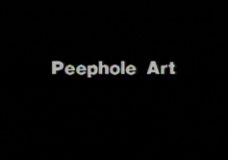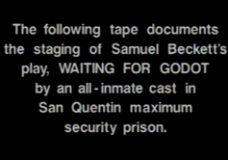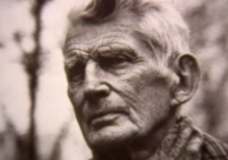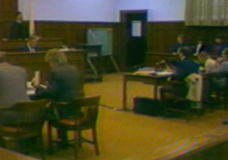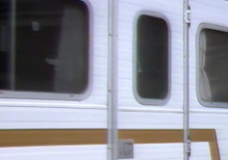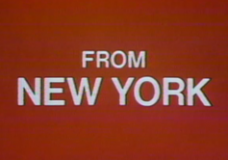CLIR, Global Village, Guerrilla Television, John Reilly
WAITING FOR BECKETT profiles the life and work of Nobel prize-winning author and playwright Samuel Beckett, a writer who shunned publicity throughout his life, and yet became a worldwide cultural influence. More than five years in the making, the 1993 documentary is a blend of rare archival footage, performances of his work, interviews with friends and scholars, as well as excerpts from Beckett’s letters which provide an astonishing and often humorous insight into his personal opinions of his life and art. Co-produced and Directed by John Reilly and Melissa Shaw Smith, WAITING FOR BECKETT was undertaken with the blessing and guidance of Samuel Beckett, who died in 1989 at the age of 83. It depicts Beckett turning one of his last plays ‘What Where’ into a highly stylized video production. It stands as the only known footage of Beckett at work as he critiques the work-in-progress with collaborator John Reilly. It also features letters written by Beckett and excerpts across his body of work, voiced by Irish actor Chris O’Neil. Actors Steve Martin and Bill Irwin perform and discuss their personal response to Beckett’s work. Footage shows Burgess Meredith and Zero Mostel in the first production of ‘Waiting for Godot’ made for television, along with famous performances by Jack MacGowran, Patrick Magee, Billie Whitelaw, and Buster Keaton starring in one of his last film roles in 1964, the only screenplay written by Beckett, entitled FILM.
Mary Manning, the only known surviving family friend who grew up with Beckett, recounts personal anecdotes of their childhood in Ireland. Never before recorded interviews with the villagers of Roussillon in the south of France recall the important but unknown period in Beckett’s life when, as a member of the French Resistance, he was forced to remain there in hiding. WAITING FOR BECKETT paints a portrait of a painfully shy man who devoted much of his life to his art, spending many impoverished years in Paris, receiving over 40 rejections for one of his early novels, before recognition slowly came his way. At the same time, we see a man who was a loyal friend, generous to a fault, full of good humor and always ready to share a bottle of whiskey over a long night’s conversation. Writer and critic S.E. Gontarski said of the documentary: “No one else has this sort of footage of Sam commenting on and working with his own play. Intercutting Sam’s comments with portions from ‘What Where’ makes for an extraordinary recreation of Sam at work. And seeing Sam alert and at work even in his advanced age is incredibly moving.” Robert Koehler of the Los Angeles Times said: WAITING FOR BECKETT is sure to stand as one of the lasting records of Samuel Beckett’s life and work.”
Three additional works exist in The Beckett Project series: WHAT WHERE, PEEPHOLE ART: BECKETT FOR TELEVISION, and WAITING FOR GODOT IN SAN QUENTIN.

